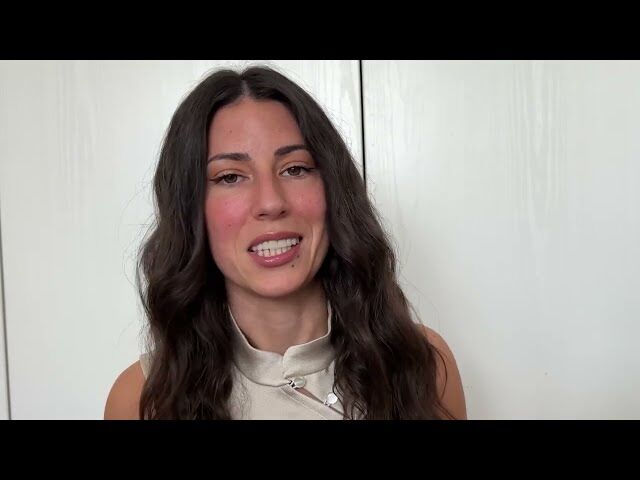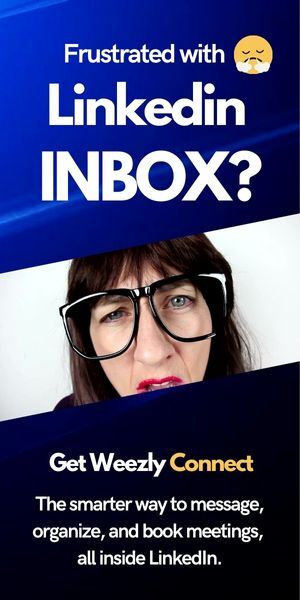Looking to transform your LinkedIn outreach results and book more meetings, faster than ever? Leveraging AI-driven personalization for LinkedIn DMs allows you to scale your outreach without sacrificing the personal touch needed to connect with prospects. Below, we break down a proven process for personalizing and automating thousands of LinkedIn messages using AI—in just seconds—to boost your reply and meeting booking rates.
Based on the original video:
Why AI-Powered LinkedIn DM Personalization Is a Game-Changer
Many sales teams and agencies are still skeptical about letting artificial intelligence lead prospect conversations. It’s understandable—every prospect deserves an authentic, human-centric interaction. But if you’re managing high-volume outreach (especially for lower-ACV SMB clients), manually personalizing every message just isn’t scalable. This is why AI personalization is quickly becoming an essential tool in modern sales strategies. Results such as a 26% reply rate and 15 qualified meetings booked per week are now within reach by combining AI with best-practice frameworks.
The Biggest Objection to AI Personalization—And How to Overcome It
A common concern is that AI-generated DMs can feel generic or irrelevant—damaging rather than building relationships. The key to overcoming this is twofold:
- Choose AI tools that pull real-time, recent data (such as a prospect’s latest website updates or LinkedIn activity).
- Invest in quality prompting: The more you educate the AI about your ideal customer profile (ICP), product, and unique advantages, the more authentic each message becomes.
Let’s dive into a step-by-step personalization workflow that balances scale with genuine human connection.
Step 1: Define and Refine Your Persona Prompt
Before AI can personalize your outreach, it must understand your target audience. Start by creating a detailed persona—such as “VP of Sales”—and specify their pain points, motivations, objections, and what makes your solution relevant. While some platforms can auto-generate this based on demographic data, editing and enriching it with your own insights is vital. You know your ICP and value proposition better than any algorithm.
Personalization Tip
Go beyond the AI’s default data. Edit:
- Core pain points and challenges
- Cost of inaction
- Competitive advantages and social proof
This extra effort pays off in responses that feel hand-written, not mass-produced.
Step 2: Upload and Target the Right Leads
Once your persona is set, move to uploading your leads. Most AI platforms allow manual input, spreadsheet imports, or direct CRM integration. For best results, segment your prospect list based on intent signals—such as leads who have interacted with your LinkedIn posts in the last two months and match a certain job title.
This ensures your message lands with leads already familiar with your brand and interested in your space.
Step 3: Personalize Messaging Frameworks and Prompts
The most powerful AI platforms give you options for message frameworks—think “observation,” “pain point,” “event,” or “inbound.” Beginners can use built-in templates, but for best-in-class outreach, customize your own framework. A simple, effective prompt might be:
- “Hey [First Name], just saw you engaged with my LinkedIn post. I noticed [Relevant Insight] about your team/company. Curious, how are you [tackling challenge or exploring topic]?”
Ask a genuine discovery question that opens a dialogue—not just a pitch.

How AI Tools Ensure Deep Personalization at Scale
Quality AI tools scan LinkedIn profiles, company websites, and recent content to identify fresh, relevant talking points. For instance:
- Achievements (“Built the Sales Innovation Paradox in 2022, podcast guest in 2025”)
- Active challenges or priorities
- Content they’ve published or engaged with recently
Every message can then be contextually adapted, referencing up-to-date actions or topics each lead cares about. These insights transform your outreach from generic to conversational, greatly improving your connect rates.
Iterate and Optimize
Don’t settle for the first draft—use prompt tweaks to direct AI output, such as “Use more of the prospect’s insights,” or “Ask a more thought-provoking LinkedIn automation question.” Each round of feedback makes the messaging sharper and more relevant.
Scaling: From 1:1 Manual to Fully Automated Campaigns
Manually exporting personalized messages and tracking engagement in a spreadsheet can work for a handful of leads—but not hundreds. Instead, leverage automation tools to:
- Send customized connection requests and DMs at scale
- Segment leads (e.g., already connected vs. new connects)
- Schedule series of personalized follow-ups
- Like and comment on posts of recently engaged prospects
When a prospect replies, switch back to manual engagement to maximize the relationship-building opportunity.
Automating LinkedIn Outreach: Example Use Case
Suppose you want to target leads who recently engaged with your LinkedIn content. Here’s how the workflow might look:
- Import leads (e.g., VP of Sales who interacted in the last 2 months).
- Segment by connection status (first-degree, second-degree).
- Send personalized messages sourced from AI outputs—using up-to-date insights for each lead.
- Automate follow-ups: day 2, liking their latest post, or sending another helpful message.
- If the lead responds, personally take over the conversation for maximum authenticity.
This process ensures highly relevant, timely outreach—without exhausting your team’s bandwidth.
Best Practices for LinkedIn DM Personalization Using AI
Refine Your Profile and Content Strategy
Great outreach starts with a compelling, prospect-oriented profile and regular value-driven LinkedIn activity. Warmer leads are easier to convert. AI can get you in the inbox, but your profile and posts make prospects want to reply. For more actionable tactics, check out strategies like the best video prospecting tools for LinkedIn—combining personalized video with AI outreach has proven especially effective.
Consistency and Tracking Matter
Run campaigns through unified inboxes or automation dashboards to maintain overview, tag leads, and ensure timely follow-ups. Inconsistent tracking is the Achilles’ heel of scaling AI-powered outreach.
Common Mistakes to Avoid in Automated Personalization
- Relying solely on AI defaults: Always provide detailed persona input and guide prompt structure.
- Sending one-size-fits-all messages: Tailor discovery questions and reference recent activity or achievements.
- Ignoring profile and post optimization: A lackluster profile can kill even the best personalized DM campaign.
- Failing to monitor campaign replies: Human touch must kick in when the conversation goes two-way.
Key Takeaways for AI-Driven LinkedIn DM Outreach
- Start with a detailed, custom persona prompt for best AI output.
- Use recent, activity-driven lead lists for higher engagement.
- Refine, test, and iterate your prompts to ensure natural, relevant messages.
- Automate at scale but always step in personally for replies.
- Optimize your profile and warming strategy alongside messaging for holistic results.
Implementing AI for LinkedIn DM personalization doesn’t just make your process more efficient—it delivers results that were previously impossible with manual-only outreach. With the right AI toolset and strategic approach, you’ll see your reply and meeting rates soar while freeing up time to focus on high-value relationship building.
FAQs: AI-Powered LinkedIn DM Personalization
How effective is AI personalization for LinkedIn messages?
AI-driven personalization often results in significantly higher reply rates compared to generic outreach. In practice, teams have reported reply rates around 26% and up to 15 qualified meetings booked per week, proving AI’s effectiveness when used strategically.
What’s the best way to guide AI for personalized DMs?
Always start with a custom, detailed persona that includes up-to-date pain points, challenges, and tailored prompts. Continuously refine your prompts based on lead responses and insights gathered from each campaign.
Can automated LinkedIn outreach damage relationships?
Automation can hurt results if messages are too generic or irrelevant. By ensuring AI references real-time, individual insights and asking authentic questions, you keep outreach personal and valuable—building, not harming, relationships.
How should I segment leads for personalization?
Segment leads by behavioral signals (recent engagement, job title) and connection status. This allows for more relevant messaging and higher conversion rates.
What’s the ideal follow-up strategy after AI-powered outreach?
Send 1–2 personalized follow-ups—such as liking recent posts or asking an additional question. When a prospect responds, switch to manual, thoughtful engagement to develop the relationship and move toward meetings.
